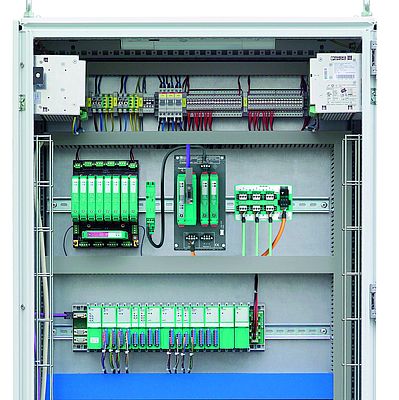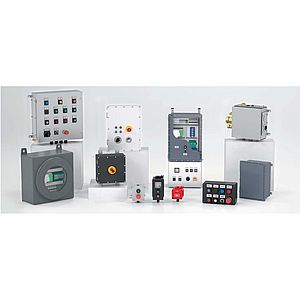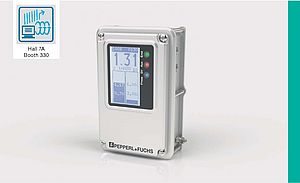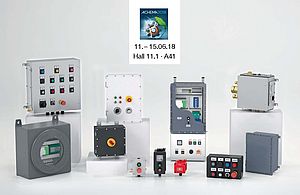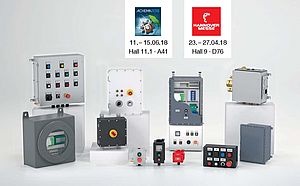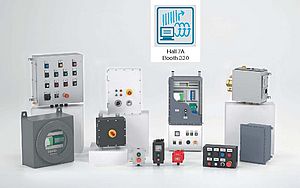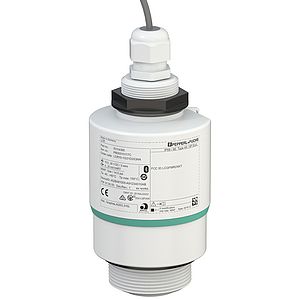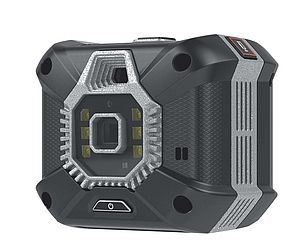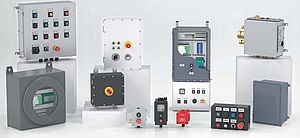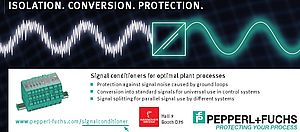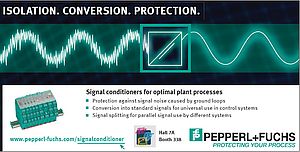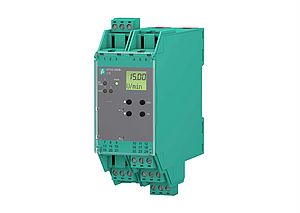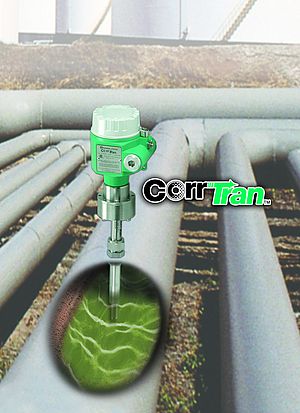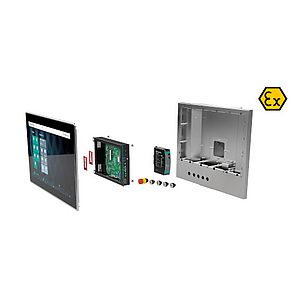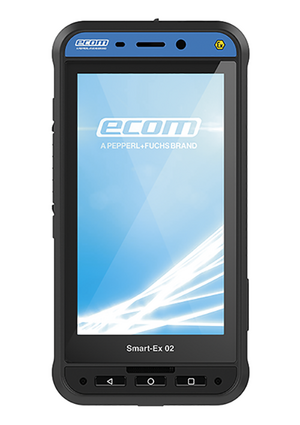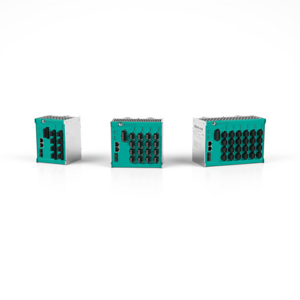When it comes to zone 1 installation of process control equipment, two approaches divide the scene. Traditional explosion protection relies on flameproof housings (Ex d) to keep sparks from inflammatory atmospheres, fieldbus based process control insists on intrinsic safety (Ex I) to prevent sparks.
The process industry is a very conservative industry that does not tend to adapt new technology unless they have really proven their safety and reliability. Yet, even industries requiring effective explosion protection, do not hesitate anymore to change from traditional 4...20 mA process control infrastructures to fieldbus systems, such as PROFIBUS PA and FOUNDATION Fieldbus H1. After all, these fieldbus systems are not really new and have a successful history that dates back some 20 years. They are the de-facto standard in plant automation and have even found their way even into chemical and petrochemical processing plants where explosion protection is one vital factor influencing the choice of a process control system.
Advantages that cannot be ignored
The reasons for such a widespread migration to a totally different technology are manifold. But one aspect is certainly the much easier way to attain zone 1 and zone 2 explosion protection. PROFIBUS PA and FOUNDATION fieldbus H1 provide intrinsically safe solutions for all types of hazardous areas. Especially since the introduction of FISCO (fieldbus Intrinsically Safe Concept), providing the proof of zone 1 and zone 2 protection is easier than ever before. The plant operator only needs to document the exclusive use of FISCO certified field devices and his installation is considered safe. This requires considerably less efforts than the time-consuming proof of Ex protection for each individual device.
FISCO requires to maintain certain limits as to voltage, current, power, capacity and inductance. Using FISCO certified equipment will guarantee that. As far as cables are concerned, a respective declaration of the supplier is considered sufficient. This simplifies the connection of different fieldbus devices, since FISCO has developed into an accepted standard and practically all devices on the market come with FISCO certification.
Prevention vs. protection
Traditional Ex d protection requires junction boxes and electronics to be housed in a flameproof enclosure conforming to IEC/EN 60079-1 that is sufficiently robust to withstand explosions from within without transmitting any flames or hot gasses to the outside. Any work requiring to open the cabinet calls for a hot work permit with all the related limitations involved.
Intrinsically safe solutions such as FISCO not only simplify installation within zone 1 and zone 2 areas of a process plant. They also allow the installation, exchange and maintenance of field devices without the need of a hot work permit. The reason is the general principle behind intrinsic safety: Instead of protecting an explosion hazardous environment from sparks that might lead to an ignition, the generation of potentially dangerous sparks is prevented right from the start by reducing all electric parameters to a safe level.
High power over the trunk
The High-Power Trunk concept, which was introduced by Pepperl+Fuchs in 2000 represents a great improvement for intrinsically safe zone 1 and zone 2 Fieldbus installations. It eliminates the previous limitations as to the maximum cable length and number of field devices per segment. For a long time, these limitations were considered a real drawback of FISCO-based intrinsic safety.
The High-Power Trunk transmits unlimited energy to operate field devices inside the ‘danger zone’. This power level is reduced inside the explosion hazardous area and distributed to all connected field devices. This is achieved via field barriers providing intrinsically safe outputs, which are galvanically isolated from the main line. In this way, each output is considered an independent power supply according to FISCO. Each fieldbus segment may have of up to four such field barriers, allowing a total of 16 intrinsically safe field devices and a maximum cable length of 1,900 meters according to the fieldbus standard. The FieldBarrier is certified for Zone 1 installation, allowing access to the output connectors without hot work permit.
Since the introduction of the High-Power Trunk concept, fieldbus systems for process control experienced a major breakthrough and have developed into the leading technology for fieldbus installation inside hazardous areas.
DART technology
As mentioned, intrinsic safety is based upon strict limitation of the power available for field devices. This makes it a simple solution to safely prevent the formation of dangerous sparks. But field instruments requiring higher power levels are simply not part of the concept. Until now, such instruments needed four wire connections separating power supply and ‘communication’ which could be traditional 4...20 mA, fieldbus or some other means, calling for flameproof Ex d protection.
DART has changed all that. With the introduction of Dynamic Arc Recognition and Termination in 2010, the last hurdle has been taken and the last argument against fieldbus-based process automation is now obsolete.
DART is based upon an interesting physical phenomenon. During its initial phase, a spark is not ignitable. It takes a few microseconds before it reaches a temperature hot enough to ignite an explosive atmosphere. DART recognizes the typical electrical pattern of a spark and reacts within the first 5 to 10 microseconds to cut off the energy supply before the spark can reach dangerous dimensions.
With this functionality, DART complements the well-established High-Power Trunk concept. It provides intrinsic safety of the complete segment including the main line. It allows the use of intrinsically safe field device and allows cable lengths of up to 1,000 meters. fieldbus segments with DART protection can provide up to 8 watts of power to the field devices connected. Former limitations are a matter of the past and intrinsic safety has definitely turned into the preferred solution for zone 1 and zone 2 applications.
Insight only a bus system can offer
Advanced zone 1 and zone 2 explosion protection concepts are not the only reason speaking for process automation with PROFIBUS PA and FOUNDATION fieldbus H1. One more aspect is the level of control and insight such systems allow. Connected via a bus system, sensors offer more than detecting conditions and measuring process parameters, while actors can do more than reacting to input signals. All such devices are also able to provide plant operators with valuable information about the condition of the physical fieldbus layer. In this way, the control system becomes fully transparent all the way to each individual field device and plant availability can be taken to completely new levels.
Monitoring systems, such as Advanced Diagnostics from Pepperl+Fuchs constantly monitor and interpret such device and segment data. They automatically detect potentially critical situations and trigger an alarm, as soon as any parameter falls below a specified value. A built-in expert system provides maintenance personnel with actionable information pointing out to possible causes and solutions for targeted and fast trouble shooting. Proactive maintenance strategies allow scheduled reaction to upcoming problems way before they can influence plant operation.
Conclusion
With PROFIBUS PA and FOUNDATION fieldbus H1 the process control infrastructure becomes more transparent, while innovative technologies, such as FISCO certified intrinsic safety, the High-Power Trunk, and DART allow totally new applications which traditional 4...20 mA process control infrastructures simply cannot offer.
Intrinsic safety -
Prevention better than protection
- by Pepperl + Fuchs SE
- November 15, 2011
- 645 views



